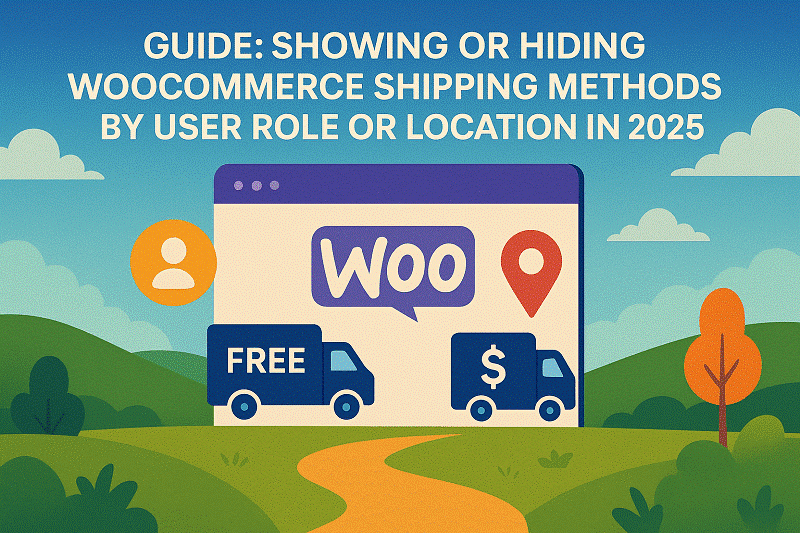
Do you still think retail is confined to clicks and taps? Not really at all. Consumers’ shopping and interaction with brands have been transformed by a new wave of convenience powered by voice. Voice interactions are not just limited to finding products via smart speakers; they are also extending to purchasing products without any hand involvement, thus the digital experiences are being redefined.
According to recent research, more than 8.4 billion voice assistants are currently accessible around the world, which points out a fantastic adoption curve for the future of conversational shopping. AI has already powered voice commerce, advanced understanding of language and context-awareness, enabling retailers to create broader relationships, process easier checkouts, and provide ultra-personalized messages that feel almost natural, immediate, and completely instinctive.
The AI Technologies Powering Voice Commerce
Voice commerce has rapidly evolved from a novelty into a necessity with intelligent algorithms and adaptive voice products that make shopping conversationally seamless. The heart of such a ruling is AI in Voice Commerce, just as it brings advanced analytics, natural language understanding, and personalization to redefine consumer-brand interactions.
The key technologies driving this change are –
- Natural Language Processing (NLP) :
It really puts language into context. It helps us understand what a person is trying to say and even how he or she feels. This is important because it allows the AI to foresee what someone is about to say, irrespective of their accent or dialect, and even if they speak an entirely different language.
- Speech recognition:
It allows individuals to convert their speech into actions. This means that customers can find products, track started orders, or request assistance using only their voice.
- Personalization Engines:
AI uses customer data to provide real-time, tailored recommendations and offers, creating unique, dynamic shopping journeys.
- Voice biometrics and security:
The process of voice-based authentication, as well as fraud detection, is assured through machine learning, driving consumer confidence during transactions conducted over the phone.
- IoT and Edge Integration:
As voice commerce has reached smart home devices, cars, and other wearables, it has expanded the shopping dimension considerably beyond the physical stores and has made it a breeze to buy using such devices.
All these factors are redefining the very concept of convenience and are effectively setting the bar for smart, voice-mediated retail experiences.
How AI in Voice Commerce Enhances Retail Experiences
Voice Commerce using AI is a benefit for the retail sector because it makes the shopping experience simpler and faster. Voice is the medium for hands-free shopping, so purchasing and searching are all done using voice. It’s very convenient, especially for customers who are busy or multitasking. The following points outline some of its major advantages:
1. Personalized suggestions:
Artificial intelligence looks at the buyer’s past purchases and his or her likes and dislikes to suggest items the customer might want to buy. A customer’s engagement with something turns into an engagement experience with something and not just a transaction. Thus, customers are less likely to walk away without getting the desired product.
2. Seamless payments:
The AI voice assistants have developed to such an extent that they can, in fact, guide the customer through the entire payment process. This significantly reduces the risk of misunderstanding or errors occurring in the payment process. Such diminutions thereby make it less likely to misunderstand each other or miscalculate the payments. Heavily implied is the potential of such a smooth payment experience translating into a lot of sales and fewer abandoned carts.
3. 24/7 Support:
AI voice assistants designed for customer service offer the option for customers to access real-time support, regardless of the time of day. That includes quick answers to questions they often ask, monitoring their orders, addressing issues right away, and assistance at any time of the day. It helps in boosting customer satisfaction.
4. Augmented accessibility:
Voice shopping is better for users with physical disabilities than the current ways. Since AI recognizes natural speech so well, this mode of shopping could potentially be more accommodating to all customers.
5. Customer engagement:
Artificial intelligence will recognize the tone and mood of customers’ voices and act appropriately in a warmer, more empathetic way. It will develop a powerful emotional connection and brand loyalty between customers and companies.
Partnering with an AI software development company helps retailers utilize these advanced voice features. As a result, this cultivates better customer satisfaction, efficiency, and brand loyalty. Voice commerce provides a new shopping experience, consistent with the modern era of how brands and retailers interact differently with customers.
Key Use Cases: AI in Voice Commerce
AI within voice commerce is rapidly changing the way retailers engage with their customers and sell products. The technology of voice-activated AI has unlimited applications for the sake of convenience, personalization, and efficiency gains. Below are five key applications that can demonstrate the significant impact of this technology:
1. Hands-Free Shopping:
Consumers use voice commands to interact with devices such as smart speakers, smartphones, etc., to search and purchase items independently, and this could be done while doing something more important or even traveling. Some of the biggest retailers in the world, including Walmart and Amazon’s are spearheading the campaign.
2. Personalized recommendations:
AI analysis about customer data is now being imbued into voice sales transactions, such that products can now be recommended in a more personalized manner. In effect, the conversion of voice transactions to sales is increased by customer satisfaction since customers feel like their recommendations are more pertinent and personal.
3. Customer Support Automation:
Virtual agents of AI handle typical inquiries on orders, returns, and all matter-of-fact facts regarding products instantaneously. It helps in uplifting wait times and gives free time for human agents to solve very complex problems.
4. Shipment and Delivery Tracking:
The consumer merely asks the voice assistant for immediate updates on his shipments, thereby getting entirely automated updates. The transparency thus built improves trust while minimizing support calls.
5. Voice-Enabled Payments:
Voice commands enable instantaneous checkout, not through typing commands but by secure user authentication and payment processing. This hassle-free check-out process increases the conversion rate while decreasing the cart abandonment rate.
By using these use cases, leading brands can maintain a competitive differentiation. These top AI development companies in India can assist retailers in integrating the latest solutions in voice commerce into their retail enterprise strategies, helping to improve customer satisfaction and organizational efficiency.
Getting Started: Tips for Implementing AI in Voice Commerce
Voice commerce has the AI potential to redefine a customer’s approach to purchasing or engaging with a brand. First, organizations should adopt a methodology that offers easy adaptation and high levels of satisfaction.
➔ Understand Your Users and Their Needs
Identify the unique needs of your customers. Formulate a list of goals: enhancing customer service or hastening the purchase process. Understanding the users’ conduct will support coming up with a voice interaction that is of great importance.
➔ Select Your Technology
Create voice platforms and AI models not only to support your business goals to your advantage, but also to ask about natural language processing and speech recognition to create a fluid, human-like conversation experience. Also, ensure your systems are integrated with the current eCommerce for immediate updates and secure payments.
➔ Don’t Overburden the User
Voice commands should be simple and natural to rely on, just as the responses should have that same spirit. Everything should be as simple as possible. You should also routinely monitor the voice interface merely for ease of conversation and not to frustrate the user.
➔ Plan for Phased Deployment
Start with a simple use case, like product search or order status; get the learning, then move to more complex functionality like personalization or voice payment.
Future Trends: Where Is Voice Commerce Headed?
As voice commerce becomes more advanced with improved AI technology, it will manifest more again in future methods whereby consumers can find shopping options through their voices, and retailers will have to keep up so that they do not fall behind. There is also a way for companies that want to hire AI developers to take advantage of voice commerce progress to create better voice shopping experiences.
Here are some of the future trends:
● Ambient Commerce:
Shopping through voice technology would be imperceptibly integrated into everyday human devices, from cars to home appliances and even clothes. Indeed, it would be very difficult to shop on an everyday basis just using the phone or a smart speaker.
● Multimodal Interfaces:
Using voice with visuals and gestures creates a multiplicity of opportunities. Shoppers will likely speak or have a conversation with a voice assistant while receiving product images or videos simultaneously to create a richer experience.
● Edge Computing:
AI would recommend shopping for very personalized installation devices. Hence, it recommends faster, more private, and smarter recommendations without always sending data to the cloud.
● Cross-Platform Voice Identity:
Single user voice profile for multiple devices and services. Roundabouts for hassle-free shopping without multiple setups or more logins.
● Hyper-personalization:
AI predicts what the customers fancy before they utter it. Voice assistants will interpret more emotional habits and suggest perfect products automatically.
Final Words:
The growth of voice commerce is testimony to the rapid speed at which technology can transform retail; AI has become more than a backend tool, per se. It has become a fundamental means for people to discover, buy, and interact with products. The new standards of convenience, accessibility, and personalized customer service that voice shopping promises are exactly what consumers now demand as a given.
With advancements in AI, voice commerce will keep improving and become even more of a “natural” part of daily life. Brands that adopt this shift will create ties that bind to their audiences. Any business that dreams of being in the driver’s seat of retail in the future must invest in voice technology today, as tomorrow’s world, to be brought out of the future era of AI in Voice Commerce, is going to rewrite the script in shopping forever.




